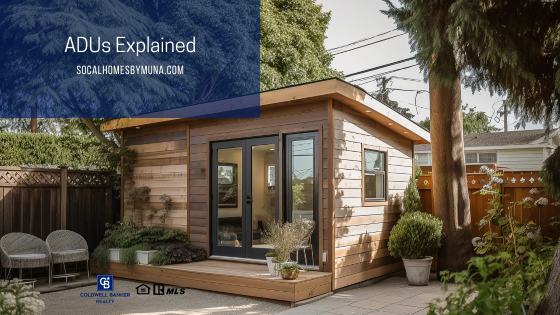Over the past few years, homeowners looked for extra ways to add living space to their properties without breaking the bank (and creating a huge remodel headache). Enter the Accessory Dwelling Unit. ADUs have seen a huge rise in popularity along the West Coast in recent years, especially in California.
Accessory Dwelling Units Explained
What are ADUs?
In-law quarters. She-shed. Studio. Guest house. An accessory dwelling unit is a completely separate housing unit from the main residence that sits on the same lot. These dwelling units range anywhere from a converted garage to residential space above the garage to a building independent from the main house.
Junior ADUs
These tend to run smaller than a traditional accessory dwelling unit. They must reside within the existing walls of the home. They cannot exceed 500 square feet of living space and must include an exterior door. Typically, this may be a bedroom converted into a mother-in-law suite with its own kitchenette and doorway outside.
California’s Rules and Regulations
Riverside County allows homeowners to add one accessory dwelling unit to their property. However, it cannot be placed in the front yard. Separate ADUs may house up to 1200 square feet of living space. However, attached units (such as a converted garage or space above the garage) cannot exceed 1200 square feet or more than half the main home’s living space (whichever number is smaller). Also, two-story units are allowed but cannot exceed 35 feet high.
ADUs require a permit to build. Homeowners must submit plans for their proposed unit as part of the permit application process. These units may be connected to current utilities on the property or they can have their own separate utility connection. This comes in handy if you plan on renting out the ADU.
Pros
Adding an accessory dwelling unit comes with quite a few positives. For example, they can create an extra income stream for homeowners. Unlike renting out a room in your house, a detached ADU provides an extra feeling of safety by allowing a renter to come and go without entering your residence. They also add value to your property. Finally, they increase your usable living space. For people who work from home, they provide a quiet place to perform their duties without distractions from others nearby.
Cons
On the flip side, they also come with some negatives. For example, they require a monetary investment. Plus, the additional space requires additional maintenance…which means additional monthly costs. If you rent out your unit, your renter knows exactly where to find you if there is a problem. And that could be at any time of the day or night. Also, they take up space in your yard that you will no longer be able to use for anything else. That’s a long-term commitment.
Before you build your own accessory dwelling unit, consider the pros and cons. Get quotes from several contractors. If you know your way around a hammer and nails, you might want to think about purchasing a kit. Make sure you do your due diligence with the City to find out permit requirements and costs as well. Good luck!
Muna Dionne, your Inland Empire specialist with Coldwell Banker Realty


 Facebook
Facebook
 X
X
 Pinterest
Pinterest
 Copy Link
Copy Link
